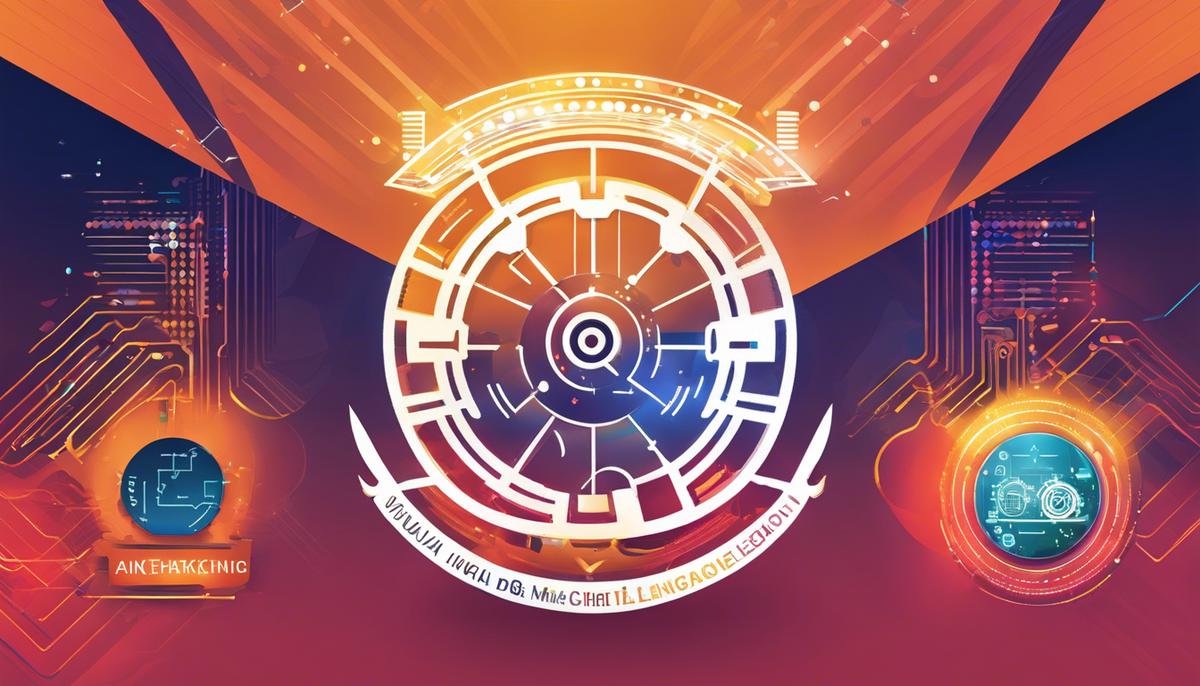As we stand on the precipice of a new era in artificial intelligence, GPT-4 emerges as a beacon of innovation, illuminating the path forward with its architectural enhancements and benchmark-setting performance. In the quest to build machines that understand and interact with us in a more human-like manner, GPT-4 represents a significant leap forward. This essay delves into the very fabric of this cutting-edge technology, unwinding the complexities of its neural network enhancements and the trove of parameters that define its core.
Architectural Enhancements in GPT-4
Pivotal Architectural Enhancements Underpinning GPT-4
The advent of Generative Pre-trained Transformer 4 (GPT-4) marks a significant milestone in the evolution of artificial intelligence language models. As GPT-4 emerges from the shadow of its predecessors, it brings forth critical architectural enhancements that set it apart and define its superiority in natural language processing tasks.
One of the foremost differentiators of GPT-4 is the expansion of parameters. GPT-4 is designed with a substantially larger set of parameters, which can be understood as the basic units of knowledge that the AI uses to learn, analyze, and generate content. These additional parameters allow GPT-4 to grasp a broader and more nuanced range of linguistic structures and concepts, thereby exhibiting more sophisticated understanding and predictive capabilities.
Another pivotal enhancement is the refinement of the attention mechanism. The attention mechanism in neural networks is what allows the model to focus on different parts of the input data, much like a human focusing on specific words while reading a sentence. GPT-4’s attention mechanism is fine-tuned to be more selective, enabling the model to create more contextually relevant and coherent text.
The training dataset’s quality and quantity have also been improved in GPT-4. The model is exposed to a wider array of texts, encompassing various subjects, styles, and nuances. This comprehensive exposure facilitates a more robust understanding of human language, both in terms of breadth and depth. Consequently, GPT-4 exhibits enhanced capabilities in understanding and generating complex sentence structures while maintaining clarity and relevancy.
An integrative approach to multimodal input represents yet another innovative aspect of GPT-4. Unlike its predecessors, which were largely confined to processing text, GPT-4 can assimilate and interpret data from different modalities, such as images and potentially sounds, leading to a more holistic AI with a deeper comprehension of human queries and interactions.
Lastly, GPT-4 introduces improvements in reasoning and logic, including better handling of nuanced prompts and questions. Thanks to an evolved training regime that emphasizes problem-solving and critical thinking, GPT-4 shows marked progress in producing results that map more accurately to the complex intentions behind user prompts.
These enhancements firmly place GPT-4 at the cutting edge of AI language models, not just in terms of raw processing power, but in its deftness at mimicking the subtleties of human-like understanding and communication. The architectural advancements of GPT-4 represent strides in our endeavor to create AI that can interact with, learn from, and ultimately benefit the swathes of human knowledge and experience.

Capabilities and Performance Benchmarks
Generative Pre-trained Transformer 4, or GPT-4, is an exemplar of the continuous evolution in the field of artificial intelligence. The distinctions it holds over its predecessors are not merely incremental; they are transformational, fundamentally altering the landscape of machine learning and computational linguistics.
One significant leap concerns the model’s capacity for understanding and generating natural language. This is manifest in the advanced natural language understanding (NLU) metrics, wherein GPT-4 exhibits superior performance in disambiguating complex language, grasping nuanced meanings, and demonstrating a higher degree of fluency in conversation. Benchmarks such as GLUE, SuperGLUE, and SQuAD reveal that GPT-4’s ability to comprehend text, answer questions, and infer context surpasses previous models, affirming its enhanced NLU capacity.
Another stride is in the domain of transfer learning. GPT-4 has shown remarkable proficiency in adapting to tasks that are not explicitly covered during its training. This ability is illuminated when confronted with unfamiliar prompts or instructions, often requiring minimal examples to generate high-quality responses. It performs with an authority that suggests an understanding beyond the surface level of languages and their semantics—a profound leap for AI.
The advancements in ethical AI, safety, and alignment also deserve recognition. GPT-4 has been trained with a focus on generating responses that are not only factually accurate but also socially responsible, culturally aware, and less prone to biases. This progression towards ethical AI underscores a commitment to socially beneficial innovation, adhering to principles that safeguard the integrity of the information it disseminates.
Performance benchmarks in AI are frequently subjected to rigorous tasks, tailored to test the limits of a model’s capabilities. In such crucibles, GPT-4 has demonstrated a robustness that commands attention. It distinguishes itself with fewer inaccuracies, showing an enhanced ability to translate complex instructions into coherent and contextually appropriate outputs. Moreover, across various disciplines such as mathematics, literature, and science, GPT-4’s performance metrics reflect a breadth of knowledge that approaches the human-like understanding—a testament to the new horizons being explored in AI.
Finally, the integration with various software and platforms delineates additional progress. GPT-4 has not only shown potential in traditional language processing tasks but has also proven adept at interfacing with other systems to accomplish a multitude of functions. From summarizing lengthy documents to drafting code, GPT-4’s abilities affirm its standing as a versatile and powerful tool that exceeds the purview of mere text generation.
In summary, GPT-4’s advancements encapsulate a momentous stride in natural language processing. The meticulous enhancements reflect a committed endeavor towards replicating human-like understanding and interaction. The deepened intelligence and broadened competencies of this model shine through consistently, heralding a new era for artificial intelligence.

Ethical Considerations and Mitigations
In the ever-evolving landscape of artificial intelligence, the advent of GPT-4 presents a pinnacle moment in the pursuit of advanced machine intelligence. This state-of-the-art model exemplifies the quantum leap from its predecessors, showcasing an unprecedented ability to understand and process human language. However, this leap in capability brings forth a constellation of ethical considerations that merit serious contemplation and proactive measures to ensure responsible use.
One of the central ethical issues pertains to the potential for biases in AI responses. The sophisticated algorithms of GPT-4 are not inherently impervious to the implicit biases present in the vast corpus of data they have been trained on. In an environment where data can encapsulate societal stereotypes and prejudices, it is incumbent upon researchers and practitioners to vigilantly guard against the perpetuation and amplification of these biases through the model’s outputs.
To address this, developers administer rigorous bias detection and mitigation protocols. Algorithms are continuously refined to identify discriminatory patterns and neutralize their influence in the model’s decision-making process. Moreover, vigorous scrutiny is applied to the data selection process to foster a balanced representation of diverse perspectives, thus minimizing the likelihood of prejudiced outcomes.
Another ethical challenge emerges from the potential use of language models for generating deceptive or manipulative content. The heightened linguistic proficiency of GPT-4 can be harnessed to fabricate convincing yet fallacious narratives, raising concerns regarding misinformation and its ramifications on public opinion and democratic processes.
In order to combat this, developers of GPT-4 integrate a framework of ethical guidelines that emphasize veracity and transparency. Content generated by the AI is regularly evaluated against these standards, with safeguards designed to prevent the utility of the model for nefarious purposes. Moreover, there is a concerted effort to educate users on the model’s capabilities and the importance of corroborating AI-generated information with reputable sources.
User privacy is a further ethical aspect compelled into the spotlight by GPT-4’s escalation in processing personal data. With the model’s advanced comprehension abilities, there exists a heightened risk of inadvertent exposure of sensitive information. To counteract this, stringent data protection measures are employed. Personalized data is anonymized and processed in such a manner that precludes the reconstruction of private information, thereby upholding the principle of confidentiality.
In ensuring the ethical deployment of GPT-4, there is an ongoing dialogue among developers, ethicists, and stakeholders to evaluate the model’s impact in a broader societal context. Ethical AI committees are instituted with the charter to continuously assess the moral implications of GPT-4’s applications, promoting a culture of accountability and foresight.
The introduction of GPT-4 necessitates a collective commitment towards ethical stewardship. It is the responsibility of the scientific and technological community to implement robust strategies to mitigate potential risks and embrace the judicious advancement of this empowering technology. As the capabilities of artificial intelligence burgeon, so does the imperative for ethical vigilance to ensure its benevolence and integrity for the advancement of society.

Future Implications and Research Directions
Having delineated the extensive improvements and the thrust in capabilities rendered by GPT-4, it is pivotal to illuminate its prospective trajectory and the ancillary domains it may invigorate.
Within the ambit of artificial intelligence, GPT-4 augurs a new paradigm for autonomous learning systems. Its auspicious framework for self-improvement through iterative training portends a future where AI systems could feasibly reduce their reliance on human intervention for further enhancement. The expeditious pace of their self-edification may prompt breakthroughs in the field – expediting discovery and the cross-pollination of knowledge across varied disciplines.
Foremost in the potentiality of GPT-4 is its application in enhancing the personalization of educational tools. The pertinence of AI in curating educational content to the learning propensities of individual students could revolutionize pedagogy – fostering a more inclusive and efficacious educational environment.
Moreover, the prowess exhibited by GPT-4 in language translation and linguistic nuance detection heralds an era of unprecedented connectivity and understanding amongst global populations. The dissolution of language barriers will undoubtedly catalyze cultural exchange and international collaboration, engendering a more interconnected world society.
Conversely, the adeptness of GPT-4 in generating human-like text posits significant implications for the creative industries. The generation of literature, scripts, and even virtual personalities could usher creative expression into uncharted territories, albeit with necessary consideration for the implications on human artists and creators.
The interface of GPT-4 with existing technologies hints at symbiotic relationships wherein AI can mediate between humans and machines more fluently, potentially refining the ergonomics of human-computer interactions. This symbiosis points towards enhanced augmentation of human capabilities, whether in routine tasks or complex problem-solving scenarios.
In the realm of cognitive science, the inquiries driven by GPT-4’s processing mechanisms can offer insights into human cognition and language comprehension. Such scrutiny may not only inform AI developmental strategies but also enlighten our understanding of the human mind.
Of note is the influence GPT-4 might have on forging robust policies and frameworks surrounding AI ethics and governance. Its deployment brings forth pressing imperatives for ensuring AI’s path aligns with human values and societal well-being. Herein lies a crucial role – policymakers, technologists, and ethicists must collaborate to harness the formidable potential of GPT-4 responsibly and construct guardrails for its deployment.
In closing, the advent of GPT-4 underpins a transformative potential that si beyond mere incremental advancement. It signals a quantum leap towards an integrated cognitive future that could reshape the very architecture of human interaction, creativity, and understanding. The ripple effects of GPT-4’s introduction will resonate through innumerable facets of society and intellectual endeavor, challenging us to reimagine the boundaries of what is possible whilst anchoring us to a steadfast commitment to ethical stewardship.

The dawn of GPT-4 heralds a future replete with possibilities and challenges in equal measure. As we cast our gaze towards the horizon of artificial intelligence, it is clear that the technological marvels encapsulated in this groundbreaking model will steer us towards a world where AI is not just a tool but a partner in our daily undertakings. The ripples of its advancements will be felt across all sectors, urging us to reimagine the potential of human-AI collaboration and laying the groundwork for a sophisticated digital society.




